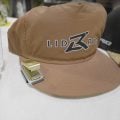Why Are High-End Fly Reels So Pricey?
In the Field & Stream blogs John Merwin wrote about the misconception that fly reels need to be expensive to get the job done
, touting the $29-39 L.L. Bean Quest II fly reels for bass fishing. Then Chad Love took issue with the prices demanded for high-end fly reels — as compared to popular baitcasting reels — noting that “in terms of pure functionality there isn’t a helluva lot of difference between a $69 Ambassadeur C3, a $200 Calcutta or a $450 Conquest. But from a manufacturing, materials and machining standpoint I can at least see where the price increases come from.”
The fact is that there is a market for the very best and expensive fly reels because: 1. The simplicity of a high-performing fly reel doesn’t mean its manufacturing costs are low (it’s not cheap to acquire and run a CNC machining shop that puts out only a few hundred products a month, or to buy materials in low volumes, or to tweak an anodization process so that it is almost faultless); and 2. a large percentage of fly fishers want gear that will last a lifetime and perform flawlessly, because its often less about numbers and more about the experience of a particular fish (which we don’t want to risk losing), place (which may not be half a mile from a Bass Pro Shop), or technique (which requires landing big fish on light line, often with the odds stacked against us). On top of that, there are more and more high-performing reels in the mid- and lower price range. You only had to be fishing saltwater in the 1970s or even 80s to understand how difficult it was to find any reel at all that would perform as well as $200 reels do now, and then you often had to wait months or years to acquire one.
There’s some latent irony in the debate about expensive vs. non-expensive gear, and it’s this: oftentimes an expert angler can get by with the cheap stuff, whereas novices stand to gain the most from smooth drags, indestructible parts, lighter weights and careful design. I fish with reels today that I probably wouldn’t have trusted 25 years ago — I knew I needed every advantage I could get. I didn’t know what pull a tippet could stand or what would happen if I cranked down just a little more on the drag or what the appearance of the bare spool under my backing was telling me to do. And it’s a good thing I didn’t have to think about it, because I was doing almost everything else wrong.
Of course that doesn’t answer the question of why fly gear is more expensive than traditional fishing gear and whether that’s a serious impediment to folks who want to get into the sport. It only suggests that fly fishing gear buying — and pricing — has a lot to do with confidence, and with the desire to improve the odds in a game that’s inherently self-limiting in its options. Try presenting a size 22 dry fly to a fished-over brown trout using a 10-pound tippet. Once we figure out how to do that we can really bring prices down.
John Gierach On Chucking Lead With Bamboo
Gear Review: NRS Chinook Angler's Life Jacket











